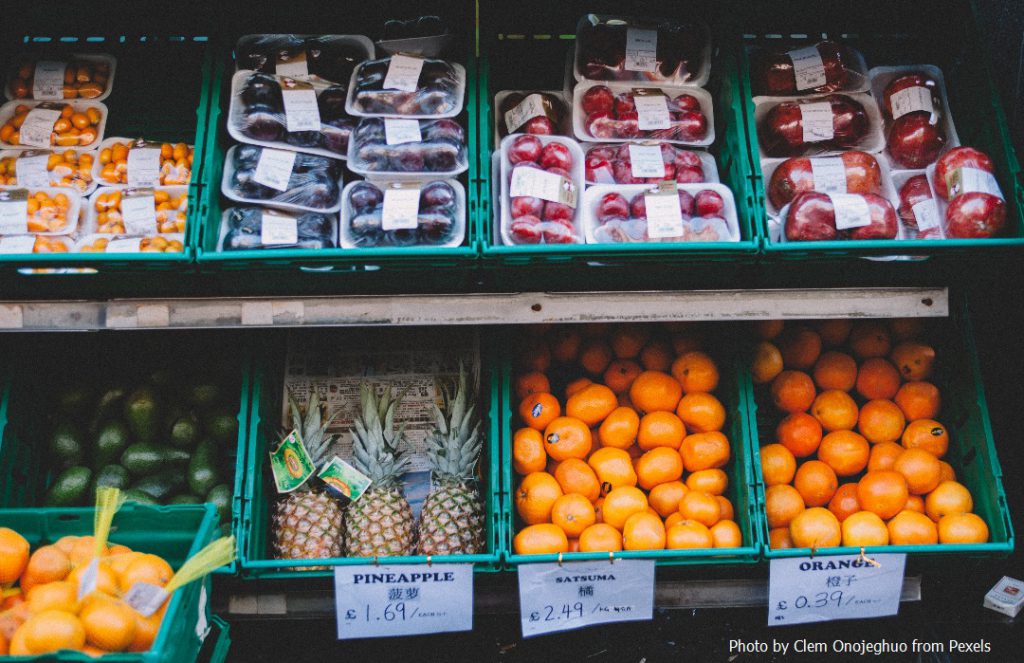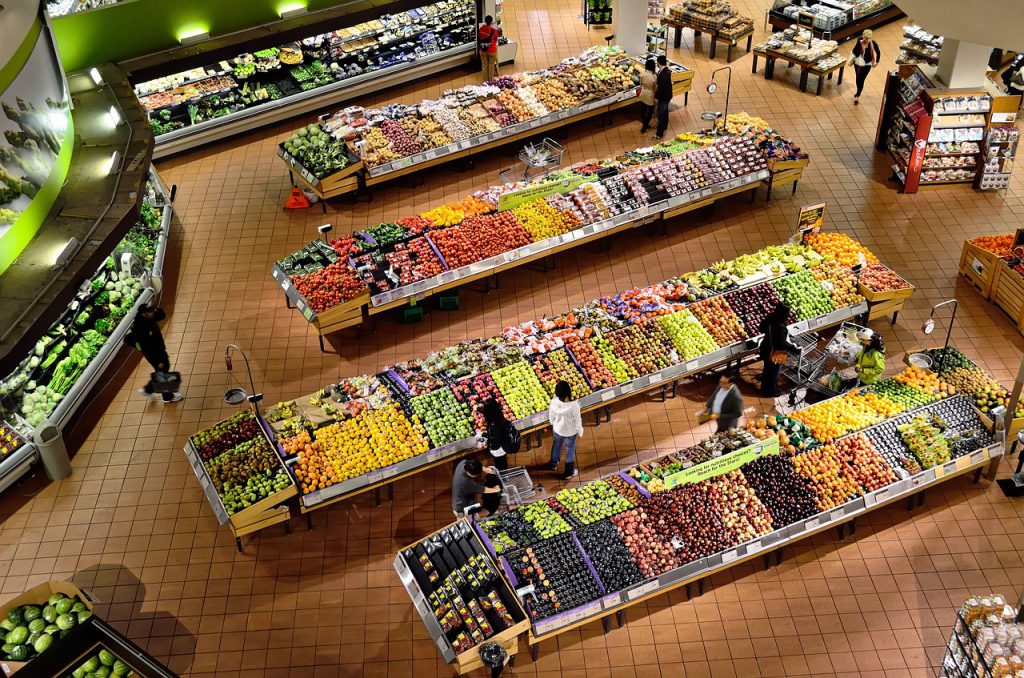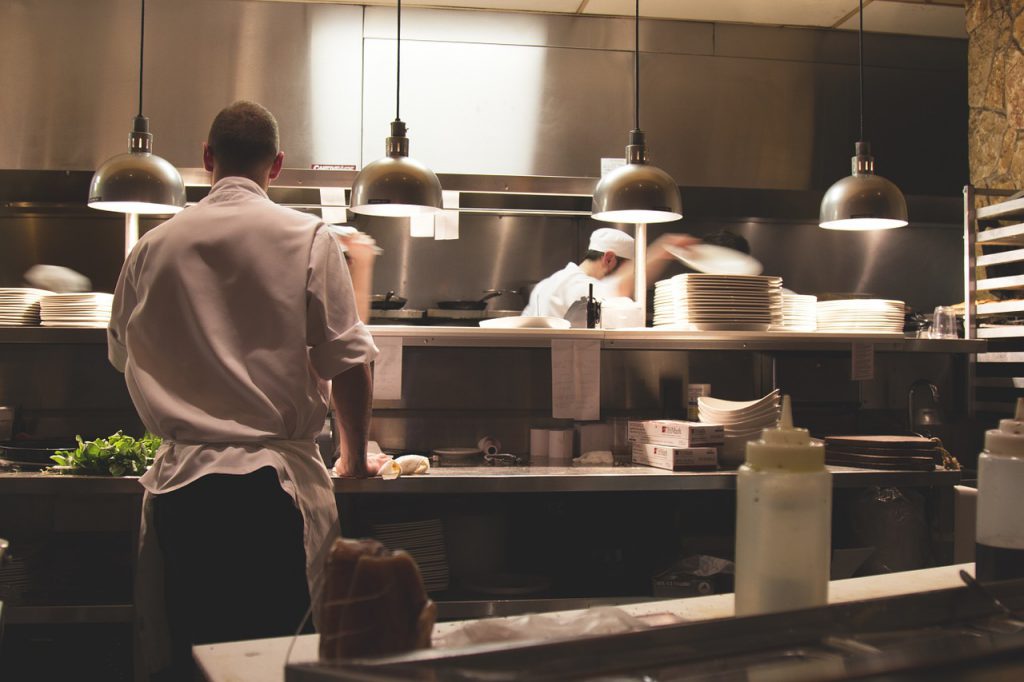ปีที่ผ่านมาเป็นปีที่ธุรกิจในอุตสาหกรรมอาหารเผชิญความท้าทายใหม่ ๆ อย่างมหาศาล ทั้งในบริบทของความต้องการที่เพิ่มขึ้น มาตรการด้านความปลอดภัยที่เข้มงวด และความเสี่ยงที่ต้องปิดกิจการเนื่องจากการระบาดของโควิด-19 ซึ่งความท้าทายดังกล่าวส่งผลกระทบอย่างรุนแรงต่อธุรกิจนี้
ธุรกิจบางภาคส่วนถูกบังคับให้เพิ่มขนาดการดำเนินงานขึ้นถึง 30% และระบบซัพพลายเชนต้องแบกรับสถานการณ์ที่หนักหน่วงนี้หลายต่อหลายครั้ง การระบาดของโรคที่ขยายวงกว้างออกไปทำให้เกิดภาวะยากลำบากและเกิดความเสี่ยงสูงมากโดยมีความสำเร็จและชื่อเสียงของธุรกิจเป็นตัวประกัน
ความท้าทายดังกล่าวเกิดขึ้นในช่วงเวลาเดียวกับที่ผู้บริโภคต้องการให้บริษัทด้านอาหารชี้แจงระเบียบขั้นตอนด้านความปลอดภัยที่เข้มงวดมากขึ้น รวมถึงการรับรองด้านสิ่งแวดล้อมที่แน่นอนจริงจังมากขึ้นกว่าที่เคยเป็นมา การระบาดใหญ่ครั้งนี้ทำให้บริษัทด้านอาหารจะต้องให้บริการกับตลาดที่กำลังต้องการความมั่นใจและความเชื่อถือได้ในสภาพแวดล้อมที่มีความไม่แน่นอนอื่น ๆ ดังนั้นการค่อย ๆ สร้างความมั่นใจโดยการดำเนินงานที่ทำให้ผู้บริโภคพึงพอใจอย่างคงเส้นคงวา และแสดงให้เห็นถึงแนวทางปฏิบัติและมาตรการด้านความปลอดภัยที่ดีที่สุดจึงเป็นสิ่งสำคัญมาก
วัดกันที่ความสามารถด้านดิจิทัล
ความสำเร็จในการปรับตัวให้ทันต่อการเปลี่ยนแปลงของแต่ละบริษัทเป็นไปในแนวทางที่แตกต่างกันและหลากหลายรูปแบบ แต่สิ่งหนึ่งที่เห็นได้ชัดคือบริษัทที่นำระบบดิจิทัลมาใช้เป็นหลักคือผู้ที่มักจะประสบความสำเร็จ ส่วนบริษัทที่ยังคงใช้ระบบดั้งเดิมหรือระบบที่พึ่งพาการใช้กระดาษมักอยู่ในสถานะไล่ตามหลังบริษัทอื่น
เหตุผลที่เด่นชัดคือบริษัทที่ใช้ระบบใช้กระดาษเผชิญกับความเสี่ยงต่าง ๆ เช่น ข้อมูลขาดความแม่นยำ ความล่าช้า และความซ้ำซ้อน แต่แพลตฟอร์มดิจิทัลสามารถผสานรวมและกำหนดบริบทของข้อมูลเชิงลึกจากวงจรการทำงานทั้งหมดได้อย่างราบรื่น เพื่อช่วยให้การดำเนินงานมีประสิทธิภาพและประสบผลสำเร็จ
องค์กรหลายแห่งตระหนักว่า แนวทางการทำงานแบบดิจิทัลที่ทันสมัยนำพาประโยชน์ด้านการปฏิบัติตามกฎระเบียบและการแข่งขันมาให้ จึงได้ลงทุนในแพลตฟอร์มและฟังก์ชั่นใหม่ ๆ เพื่อใช้ประโยชน์จากความสามารถสำคัญนี้ แต่เมื่อเวลาผ่านไปก็มีคำถามว่าความสามารถเหล่านี้เพียงพอหรือยัง
ความโปร่งใสคือความสามารถในการตรวจสอบย้อนกลับแบบใหม่
ความสามารถในการเรียกคืนสินค้าได้อย่างรวดเร็ว เพื่อช่วยให้ตรวจสอบย้อนกลับได้อย่างครอบคลุม รวดเร็ว และมีประสิทธิภาพ เป็นแง่มุมที่สำคัญที่สนับสนุนการที่บริษัทสามารถปฏิบัติตามข้อกำหนด ชื่อเสียงของบริษัท และการบริการลูกค้า อย่างไม่มีข้อสงสัยใด ๆ
อย่างไรก็ตาม ระบบดั้งเดิมที่บริษัทผู้ผลิตอาหารจำนวนมากใช้อยู่มักมีข้อจำกัดในการตรวจสอบย้อนกลับที่ครบวงจร เพราะระบบดั้งเดิมไม่สามารถเข้าถึงข้อมูลของซัพพลายเออร์หลักได้ มีบริษัทด้านอาหารเพียงไม่กี่แห่งที่มีแพลตฟอร์มที่สามารถทำเช่นนี้ได้ และบริษัทเหล่านี้สามารถสร้างความได้เปรียบในการแข่งขันได้อย่างมาก เนื่องจากผู้บริโภคต่างต้องการความโปร่งใสมากขึ้นในเวลาที่พวกเขาเลือกซื้ออาหาร
บริษัทด้านอาหารที่มีแนวคิดก้าวไกลมีการระบุคิวอาร์โค้ดไว้บนผลิตภัณฑ์ต่าง ๆ ของตน ซึ่งผู้บริโภคสามารถสแกนเพื่อดูแหล่งที่มาของผลิตภัณฑ์นั้น ตั้งแต่แหล่งกำเนิดของส่วนผสมต่าง ๆ การผลิต การจัดส่งผ่านระบบซัพพลายเชน และความเกี่ยวข้องกับสิ่งแวดล้อม ซึ่งทั้งหมดนี้แสดงให้เห็นความโปร่งใสอย่างครบถ้วนจากแหล่งผลิตจนถึงจานอาหารของผู้บริโภค
การกระทำดังกล่าวมีจุดประสงค์ชัดเจนในการสร้างความเชื่อมั่นในสินค้าด้านอาหารให้กับผู้บริโภค การแสดงหลักฐานว่าอาหารนั้น ๆ ได้รับการผลิตด้วยวิธีการที่ปลอดภัยและยั่งยืนจะช่วยเสริมให้ความภักดีต่อแบรนด์แข็งแกร่งขึ้น การใช้ข้อมูลจากระบบซัพพลายเชนในแนวทางที่ชาญฉลาด ช่วยให้เกิดประโยชน์หลายประการต่อซัพพลายเชนด้านอาหาร เช่น คุณภาพเพิ่มขึ้น คาดการณ์วันที่ควรบริโภคก่อน (Use Before Dates) ได้มากขึ้น และลดปริมาณอาหารเหลือทิ้งหรือขยะอาหาร (Food Waste) ลงได้
ตัวอย่างเช่น ผักและผลไม้นำเข้าจำนวนมากที่วางขายในซุปเปอร์มาร์เก็ต จำเป็นต้องมีระบบที่สามารถมอนิเตอร์สถานะการจัดส่งที่เฉพาะเจาะจงต่าง ๆ ในระบบซัพพลายเชนที่ผู้ส่งออกหรือผู้นำเข้าใช้และตัวแปรต่าง ๆ เช่น อุณหภูมิของตู้คอนเทนเนอร์ที่ใช้ขนส่ง การขนส่งเกิดการล่าช้าหรือไม่ และการจัดเก็บในคลังสินค้าเป็นอย่างไร เพื่อเป็นข้อมูลในการประมาณการอายุการเก็บรักษาสินค้า
ความรับผิดชอบ
หน่วยงานที่ดูแลด้านอุตสาหกรรมการผลิตอาหารจำนวนมาก ให้ความสำคัญกับเป้าหมายด้านขยะอาหาร เช่น แผนขับเคลื่อนการผลิตและการบริโภคที่ยั่งยืน พ.ศ. 2560-2580 (ฉบับปรับปรุงครั้งที่ 1) โดยสำนักงานนโยบายและแผนทรัพยากรธรรมชาติและสิ่งแวดล้อม (สผ.) ได้มีแผนการดำเนินงานด้านการผลิตและการบริโภคที่ยั่งยืนไว้ 11 เป้าหมาย และมีเป้าหมายในการลดการสูญเสียอาหารและขยะอาหารรวมอยู่ด้วย เช่น
- โรงงานในอุตสาหกรรมอาหารอย่างน้อยร้อยละ 100 ใช้เทคโนโลยีที่เป็นมิตรต่อสิ่งแวดล้อมและลดการสูญเสียอาหารในกระบวนการผลิต ภายใน พ.ศ. 2580
- สินค้าด้านเกษตรและอาหารในประเทศร้อยละ 80 มีข้อมูลปริมาณการสูญเสียอาหารในระบบซัพพลายเชนและขยะอาหาร ภายใน พ.ศ. 2580
- ความสูญเสียตลอดซัพพลายเชนในการผลิตอาหารลดลงร้อยละ 5 ต่อปี ตั้งแต่ พ.ศ. 2563 – 2580
- ร้านค้าปลีก ร้านอาหาร และ โรงแรมมีขยะเศษอาหารลดลงร้อยละ 50 ใน พ.ศ. 2580 เทียบกับ พ.ศ. 2560
- ปริมาณขยะอาหารของประเทศลดลงอย่างน้อยร้อยละ 50 ใน พ.ศ. 2580 เทียบกับ พ.ศ. 2560
จะเห็นได้ว่าเป็นการกำหนดเป้าหมายด้านขยะอาหารไว้ค่อนข้างสูง และธุรกิจทุกแห่งได้ร่วมมือกันเพื่อบรรลุเป้าหมายนี้ ยกตัวอย่างเมื่อเดือนมิถุนายนที่ผ่านมา กลุ่มเซ็นทรัลซึ่งเป็นแบรนด์ธุรกิจค้าปลีกและบริการของไทยได้ออกมาเปิดเผยถึงนโยบายการจัดการขยะอาหาร เพื่อลดการสูญเสียอาหารและขยะอาหาร รวมถึงขยะอาหารที่เหลือจากการจำหน่ายโดยห้างร้าน ซุปเปอร์มาร์เก็ต และโรงแรมในเครือ โดยมีการนำอาหารส่วนเกินบริจาคให้ผู้เปราะบางทางสังคมจำนวน 203 ตันต่อปี คิดเป็นมื้ออาหาร 855,869 มื้อใน พ.ศ. 2563 คิดเป็นการลดการปล่อยก๊าซเรือนกระจกได้ 380 ตันคาร์บอนเทียบเท่า เป็นต้น
การสร้างแบรนด์ที่โปร่งใส
นอกจากประสบความสำเร็จตามเป้าหมายด้านสิ่งแวดล้อมต่าง ๆ แล้ว ความสดของอาหารเช่นผักผลไม้ แหล่งกำเนิด และสภาพของฟาร์มปศุสัตว์ที่เกี่ยวข้องกับเนื้อสัตว์และนม ที่เห็นได้อย่างชัดเจน เป็นเหตุผลสำคัญของความแตกต่างระหว่างซุปเปอร์มาร์เก็ตทั้งหลาย ระดับความโปร่งใสดังกล่าวนี้ สามารถใช้เป็นเครื่องมือในการสร้างและเพิ่มความเชื่อถือจากผู้บริโภคได้มากขึ้น และช่วยให้แบรนด์มีส่วนแบ่งทางการตลาดสูงได้อีกด้วย
กระบวนการทำงานแบบแมนนวลและระบบแบบดั้งเดิมอาจเป็นวิธีที่ช่วยเรื่องการตรวจสอบย้อนกลับได้ แต่อยู่ในระดับพื้นฐานเท่านั้น ธุรกิจมีความเสี่ยงสูงที่อาจต้องปิดโรงงานเต็มรูปแบบอันเนื่องมาจากไม่สามารถระบุที่มาของปัญหาได้อย่างถูกต้อง และตามมาด้วยความล้มเหลวในการดำเนินกิจการ เห็นได้ชัดว่าค่าใช้จ่ายและความเสียหายที่เกี่ยวเนื่องกับเรื่องนี้ไม่ควรเกิดขึ้นอย่างถาวร ดังนั้นธุรกิจด้านนี้จึงต้องลงทุนจัดหาและใช้ความสามารถทางดิจิทัลที่ทันสมัยต่าง ๆ เพื่อให้สามารถลดความสูญเปล่าให้เหลือน้อยที่สุด เพิ่มความโปร่งใสและความเชื่อถือจากผู้บริโภคให้มากที่สุด ซึ่งสิ่งเหล่านี้กลายเป็นสิ่งที่ภายในปี 2564 นี้บริษัทด้านอาหารต้องทำให้สำเร็จก่อนที่จะเข้าแข่งขันในตลาด
Food standards to the next level
Fabio Tiviti, Vice President, ASEAN, Infor
2020 has presented a myriad of new challenges for the food industry. Against a backdrop of increased demand, stringent safety measures, and the risk of shutdowns resulting from outbreaks, have converged to create a perfect storm.
Some sectors have been forced to scale their operations by up to 30%, and in many cases, supply chains have borne the brunt of this. The ramifications of the pandemic have exposed significant bottlenecks and vulnerabilities, putting fulfilment and reputation on the line.
All of this comes at a time where consumers are demanding that food companies demonstrate more stringent safety protocols, and indeed greater environmental credentials, than ever before. Amplified by the pandemic, food companies are typically serving a market looking for reassurance and reliability in an otherwise uncertain environment. Instilling confidence through consistent fulfilment, and demonstrating best practice and safety measures, is therefore paramount.
The digital divide
The extent to which food companies have successfully adjusted to the changes we’ve witnessed this year varies hugely. What has become clear, however, is that digital leaders are winning, while those still using legacy, or paper-based systems, are finding themselves in catch up mode.
It stands to reason that while paper-based systems leave companies exposed to the risk of inaccuracies, delays and duplication, digital platforms can seamlessly consolidate and contextualise insights from across the entire lifecycle to support efficient, effective operations.
And in recognition of the compliance and competitive benefits a modern, digital approach brings, many have invested in new platforms and functionality in order to achieve this important capability. But as we move into 2021, the question is more about whether these capabilities go far enough.
Transparency: The new traceability
There’s absolutely no question that being able to undertake a recall quickly to facilitate comprehensive, fast, effective traceability, is a crucial aspect of supporting compliance, reputation and customer service.
However, the legacy systems used by many food manufacturers are typically limited in their ability to conduct full traceability as they can’t access crucial supplier information. Only a minority of food companies have the sophisticated platforms to do this, but those who do, stand to create a substantial competitive advantage as consumers demand greater transparency in the food choices they make.
Forward-thinking food companies are already presenting QR codes on their products, which can be scanned by the consumer to view the item’s origin, from growth of ingredients to
production, supply chain journey and associated environmental footprint, all of which demonstrate full transparency from farm to fork.
This clearly is aimed at building food trust at the consumer. Showing the evidence that the food has been produced in a safe and sustainable way strengthens brand loyalty. By using the data from the supply chain in a smart way, the food supply chain can realize many benefits such as increased quality, more predictable use before dates, and reduced food waste.
Many of the fruit and vegetables we see lined up in our local supermarkets for example, are imported from overseas. The very best systems can monitor the specific conditions of the supply chain they are processed through, incorporating variables such as container climate, delays and warehouse storage, in order to predict shelf life.
Taking responsibility
With ambitious food waste targets set by numerous industry bodies, the industry has a responsibility to play its part and demonstrate these efforts and credentials to its customers. Tesco and premium food supplier Cranswick for example recently published their latest food waste data which revealed that they had exceeded the 2030 reduction targets set out by the Waste and Resources Action Programme (WRAP).
But if the UK is to meet its long term climate targets as set out in Sustainable Development Goal 12.3, there is much work still to do.
Landfilled food releases carbon dioxide and other greenhouse gases over time, making it a contributor to climate change. The UK’s own Committee on Climate Change (CCC) recommends that food waste is cut by one-fifth between 2021 and 2050 in order to reach net-zero. The ability to monitor and predict dynamic shelf life is therefore crucial in ensuring that products are not condemned unnecessarily, and that profitability is maximised.
Transparent branding
In addition to meeting environmental targets, clearly the freshness of fruit and vegetables, and the origin and farming conditions associated with meat and dairy are key sources of differentiation between supermarkets. This level of transparency can in turn be used as a means of garnering greater trust between brand and consumer, and to win market share.
Manual processes and legacy systems might tick boxes and facilitate traceability at its most basic level, but the risk of a full factory shutdown through an inability to locate the precise source of a problem, and subsequent failed fulfillment is high. Clearly the costs, and damaged relationships associated with this are not sustainable, therefore investing is modern digital capabilities to minimise waste and maximise transparency and consumer trust, have become prerequisites of market entry for food companies in 2021.




